VINCI TECHNOLOGY
vINCI APP
The vINCI APP is a mobile application designed for tablets and/or smartphones, that allows the user to monitor his/her wellbeing and quality of life and to receive feedbacks based on a clinically-validated analytical model, in the form of a report. This report will be generated in real time based on data introduced by the user and by several attachable devices. Moreover, the user can interact with the APP by replying to questionnaires about his/her perceived status, by setting timers related to the medications needed during the day, and also engaging with other persons. Several wearable devices may be connected to the APP, such as a smartwatch to count the number of steps performed daily and/ or to monitor vital signs, or a smart insole to analyse the user’s level of daily activity. These devices will provide additional data to the APP, to improve the understanding of the user’s conditions and behavior.
The user has the option to use only the services that are provided by the APP and, depending on the needs and budget, can integrate either the smart watches, the smart insole or both.
Data collected from the APP can be securely shared with a caregiver or a doctor, to improve assistance and receive feedback whenever something abnormal happens.
The vINCI APP allows the user to connect a limited (suggested) range of state-of-the-art devices. Depending on the type and number of devices, the user will have access to a number of different options / reports, which will help improve the quality of life of older person. The more integrated devices there are, the more accurate and complex the results will be.
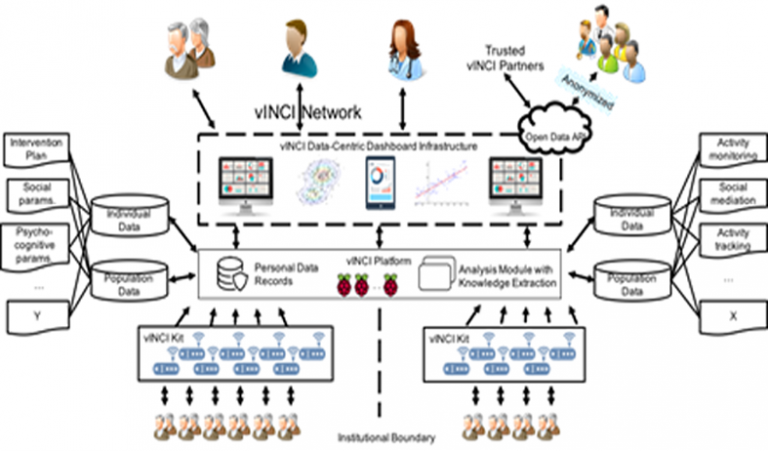

vINCI DASHBOARD
vINCI will develop a dashboard, where family and caregivers will be able to monitor concurrently several older adults with at least the same results as when each adult is monitored individually through conventional/physical means.
SENSING TECHNOLOGIES & COMPONENTS
1) Smart Insole
The first prototype of the smart insole was implemented by resorting to an existing commercial embedded platform, with the aim of testing, first of all, the feasibility of the expected sensing capabilities. In order to have a wearable, minimally intrusive device, able to somehow measure the activity levels of an older adult, the target metrics to obtain were set as:
- number of steps performed during an observed amount of time;
- mobility status associated to three different conditions, i.e. standing, walking, not wearing the insole, monitored within a speci ed time interval (every 3 seconds), in order to provide a more detailed report about the motion activity of the user overall the observed time.
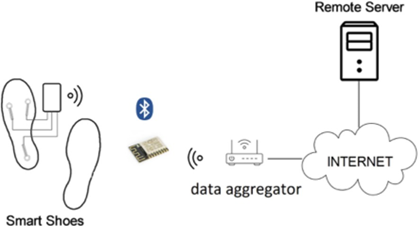
2) Smartwatch
The Smart Watch is being produced by Connected Medical Devices (CMD). This device transmits information to the Connected Medical Devices platform, where it is exported in JSON format and sent to the vINCI platform (Figure 2.3). The data format is as follows: GPS location / time; Number of steps; Battery level; Number of times when the clock came out of a defined area; time intervals when the clock was removed from the hand.
The CMD platform stores and interprets information such as the phone number associated with the SIM inserted in the clock, the phone number of the device where the CMD mobile application is running, GPS points in time (tracking information), or “safe zones / geo fences” currently associated with a clock.

3) Smart band for physiological signals collection
To be completed…

4) Depth Cameras-Based Sensing
The data provided by the depth sensor depends on the configuration of the function the sensor is used for. In a top-view configuration (which fits best with the project), with the sensor located physically on the ceiling, we can recognize and track the subject by processing the frames generated by the sensor.
Once the tracking mode is active, the depth sensing system sends the list of spatial coordinates according to the top-view plan to the remote server. In such a configuration, we can identify the patient’s “blob” and locate it in an observable environment (e.g., we can detect how long the subject spends in a certain area, such as how long it stayed on the couch).
On the server, the information about how long the subject spent in a particular area is extracted – we have the necessary technology, but the depth sensor will most likely have to be coupled with a video camera to detect a particular person in a group (suppose the tracking action takes place in a family, and we want to track the in-house actions of a particular member of that family, in particular). Research in this regard is innovative and has been launched within the project.
If the depth sensor is used in front of the subject, it is possible to extract the so-called body joints’ coordinates relative to the subject, that is the spatial coordinates of a number of specific points associated with the human body’s landmarks. By collecting these coordinates and processing them, it is possible to obtain a representation of the movements made by the subject – this is also an innovative aspect of the project.
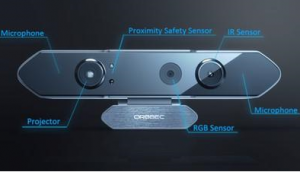
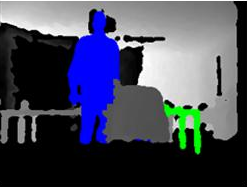
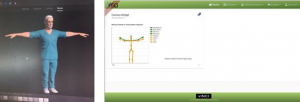

APP-delivered Questionnaires
Clinical questionnaire filled in by the patient into an application developed for a tablet used by the patient and the operators will send data to the collecting module using WiFi or LTE connection;
